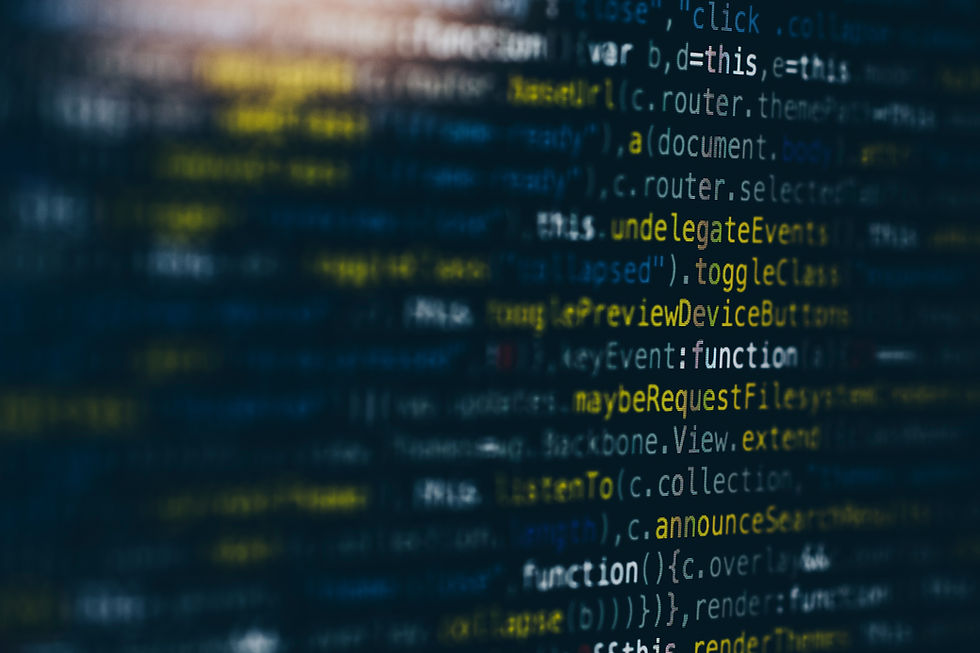Protecting Sensitive Data in Testing: Why Smart Data Masking is Crucial
- CloudEzee Technologies
- Feb 14
- 3 min read

Introduction
Every business places customer data in very high regard. Nonetheless, while conducting software application testing, many businesses inadvertently work with live data. Not only does this pose a risk to confidential information, but it may also yield devastating consequences like large fines and damage to the company's image. With corporations being held up to stricter norms, data preservation in testing is supposed to be of the topmost concern. Wise data masking represents a realistic measure that will conceal sensitive data without sacrificing the effectiveness of teams for testing.
The High Cost of Testing Data Breaches
The cost of a data breach is staggering. According to a 2023 report, the cost of a breach was more than $4 million on average. Organizations using real, unmasked data in testing put themselves at dire risk.
Legal Fines: Fines from regulatory agencies can ruin budgets.
Loss of Customer Trust: A breach may make customers change to competitors.
Recovery Costs: Cleanup following a breach may be very expensive and time-consuming.
Examples of Data Exposure During Testing
There have been several well-known breaches which have highlighted the dangers of using live data when testing. For instance, a big healthcare provider unintentionally exposed patient information while testing an application and was fined millions. Examples such as these highlight the dangers of inadequate protection measures.
Publicity of Breaches: Publicity has more potential to amplify the impact, damaging brand reputation more.
The Growing Need for Secure Data Masking Solutions
With the growing number of cyber attacks, businesses are forced to adopt data masking solutions. The technology securely protects sensitive data through various methods, allowing developers to create without exposing real information.
Understanding the Risks of Using Real Data in Test Environments
Adherence to Regulatory Requirements and Penalties for Data Breaches (e.g., GDPR, CCPA)
Legislation like GDPR and CCPA necessitates stringent protections on personal data. A leak can incur a fine of up to 4% of an organization's annual revenue. It is not needed; it is obligatory.
Financial Impacts of Data Leaks During Testing
The monetary impact of data breaches can be:
Regulatory Penalties: Massive expenses for being non-compliant.
Litigation Expenses: Litigation will take resources for granted.
Business Interruption: Recovering from a breach normally translates to unexpected expenses.
Potential for Loss of Reputation
Reputation is a won asset. The confidence of clients and partners is lost when there is a breach. Time, energy, and money are required to restore this confidence.
The Importance of Data Masking for Safe Testing
What Is Data Masking and How Does It Work?
Data masking is the procedure of substituting sensitive data with non-sensitive substitutes. In this way, teams can still run necessary tests without revealing actual data.
Different Types of Data Masking Methods
Tokenization: Replacing sensitive data with exclusive identifiers.
Pseudonymization: Altering data to hide identities while not impairing use.
Shuffling: Randomizing data to protect original datasets.
Benefits of Having a Data Masking Plan
Improved Security: Avoids risk of a data breach during testing.
Compliance: Maintains compliance with regulations.
Cost-Effective: Saves future legal and recovery costs.
Choosing the Right Data Masking Solution
Key Features to Look for in a Data Masking Solution
When selecting a data masking tool, remember:
Ease of Use: Easy-to-use interfaces speed up implementation.
Flexibility: Data masking in many environments.
Audit Trails: Tracing changes and access for compliance.
Integration with Existing Testing Infrastructure
An effective data masking solution must integrate easily with existing testing processes and tools. Integration minimizes disruption and maximizes efficiency.
Scalability and Performance Considerations
Select a solution that can be scaled with your growing business. Select tools that provide fast processing to prevent slowing down the testing process.
Having a Secure Data Masking Strategy
Creating a Comprehensive Data Masking Policy
Establish well-defined guidelines on how data masking will be applied. This policy should include procedures, roles, and responsibilities.
Training Employees on Data Security Best Practices
Educate your staff. Regular training on data security basics helps everyone understand the importance of data masking.
Regular Audits and Security Assessments
Conduct regular audits and security assessments of your data masking procedures. These audits help with identifying vulnerabilities and refinement of data protection processes over time.
Conclusion: Safeguard Your Test Environments with Smart Data Masking
Keeping your test environment secure begins with effective data masking. Utilizing real data for testing poses significant risks, including potential security breaches and compliance issues. This is where tools like TrustMask prove invaluable. With just a few simple clicks, TrustMask effectively masks sensitive information, ensuring your business remains safe and compliant. It's user-friendly, dependable, and designed to provide peace of mind. Don't wait for a data breach to occur—start masking today for a more secure future!
Try TrustMask Today
